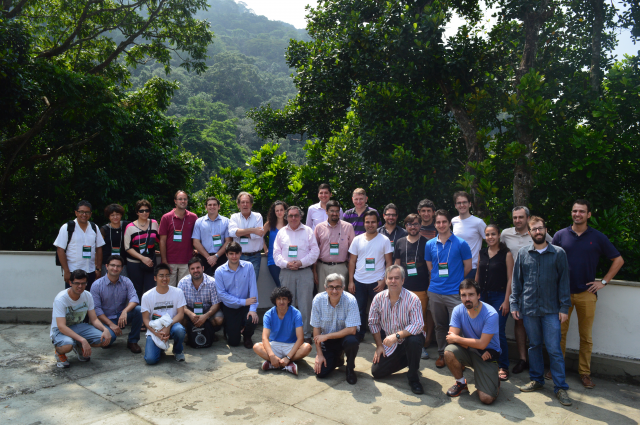LAMPS no Workshop on Analysis and Applications of Stochastic Systems
LAMPS Research at the Workshop on Analysis and Applications of Stochastic Systems - IMPA, RJ 2016.
Speaker: Sergio Bruno
Title: Strategic risk management: A framework for renewable generation investment under uncertainty
Abstract: Renewable investment may be fostered by applying risk management techniques such as forward contracting, diversification and optimal investment timing. By trading contracts and exploiting the seasonal complementarity of the renewable sources, it is possible to reduce risk exposure. The problem of investment in renewable energy plants may be seen as a multistage stochastic optimization model with integer variables, which is very hard to solve. The main approaches in the current literature simplify the problem by reducing the dimensionality of the scenario tree or by assuming simplifying hypothesis on the stochastic processes. We introduce a renewable investment valuation framework, considering the main uncertainty sources and portfolio investment alternatives. We also present a method to solve, by applying decomposition techniques, the problem of optimal investment in seasonal complementary renewable plants in the Brazilian energy market. This is a multistage stochastic and non-convex problem. Investment policies are devised using an algorithm based on Stochastic Dual Dynamic Programming. Integrality constraints are considered in the forward step, where policies are evaluated, and relaxed in the backward step, where policies are built, to ensure convexity of the recourse functions. We use a Markov Chain to model dependence structure of the stages. Performance evaluation is carried out using the original data, validating our heuristic. The framework is able to represent the characteristics of the Brazilian FTE and may be applied to similar markets. We incorporate risk aversion with coherent measures of risk.
Joint work with S. Ahmed, A. Shapiro and A. Street.
Speaker: Arthur Brigatto
Title: On the cost and side effects of time inconsistency in long-term hydrothermal planning
Abstract: Long-term hydrothermal operation planning makes use of the stochastic dual dynamic programming (SDDP) algorithm to obtain the optimal policy. For computational tractability sake, SDDP models often neglect system details, crucial in the short-term implemented unit dispatch. Different planned and implemented policies are time inconsistent and might lead to potentially dangerous system states, which ultimately compromise the efficiency on the use of system resources. In this talk we describe a methodology to assess the cost of time inconsistent policies in hydro-thermal power systems planning. We illustrate side effects of considering inconsistent policies for some relevant sources of inconsistency and discuss ways and new algorithms for mitigating them.
Joint work with A. Street and D. Valladão.
Speaker: Davi Valladão
Title: Risk-constrained dynamic asset allocation via stochastic dual dynamic programming
Abstract: Latest approaches in the literature of Stochastic Dynamic Dual Programming (SDDP) introduce risk aversion via time consistent dynamic risk measures. The objective function is defined as a recursive formulation of a one-period coherent risk measures, usually the convex combination of expectation and Conditional Value at Risk (CVaR). The recursive model ensures time consistent policies and has a suitable economic interpretation of a certainty equivalent. In practical applications however, a decision maker must define the relative weights between expectation and CVaR to represent his risk aversion, which is non-intuitive user-defined risk aversion parameter. In this work, we propose an asset allocation model motivated by the actual decision process in the financial market. Hedge funds hire managers to propose trading strategies
that maximize expected returns while risk departments impose constraints to strategies with a high level of risk. We focus our developments on risk-constrained models arguing it is reasonable to assume that an investor knows how much he is willing to lose in a given period. Our approach assumes a Markov dependence of asset returns and imposes one-period CVaR constraints ensuring a relative complete recourse time consistent model. As opposed to recursive risk measures in the objective function, our model has a straight-forward lower bound, considering maximization problem, and a direct way of representing the risk-reward trade-off in a time varying efficient frontier.
Joint work with Thuener Silva and Marcus Poggi.




